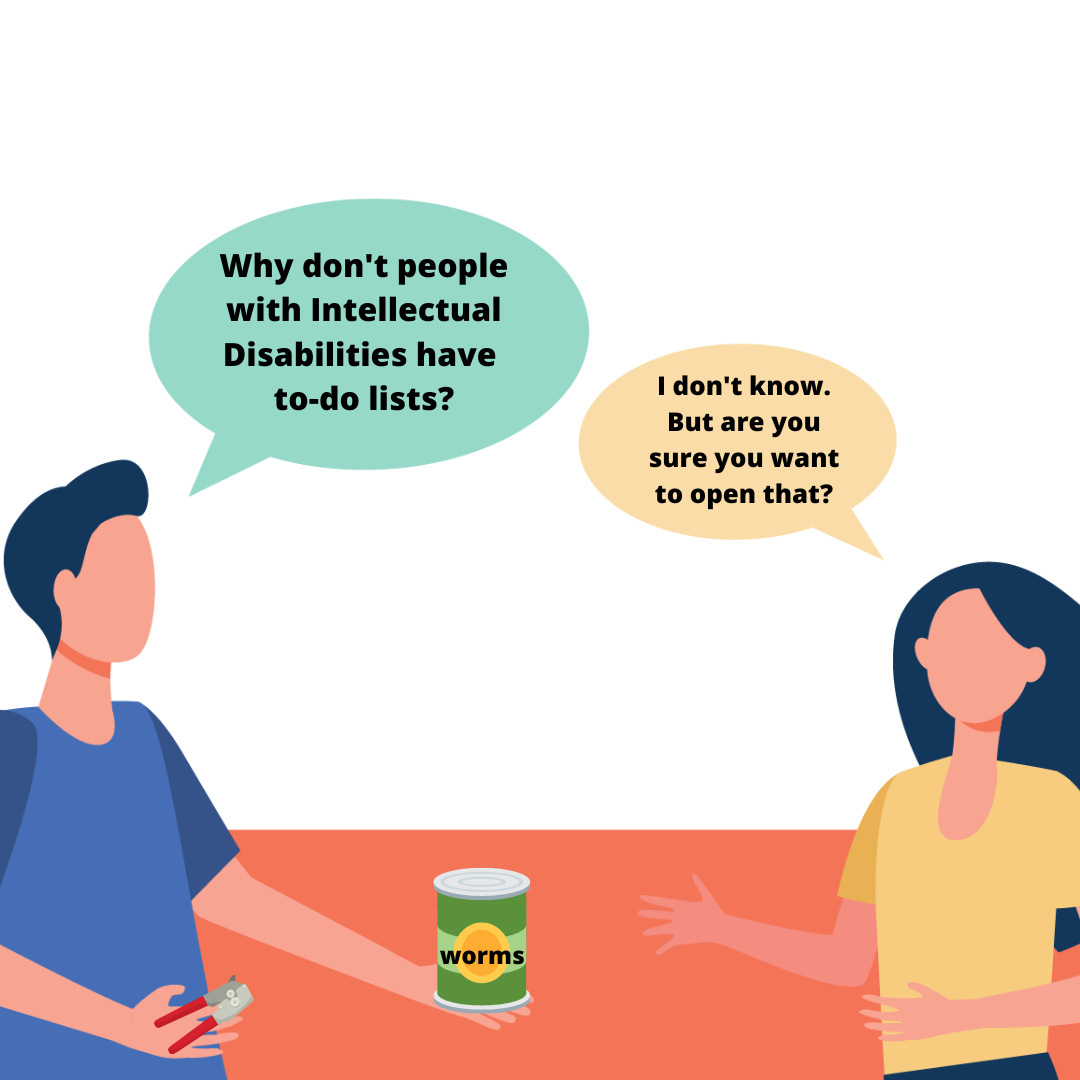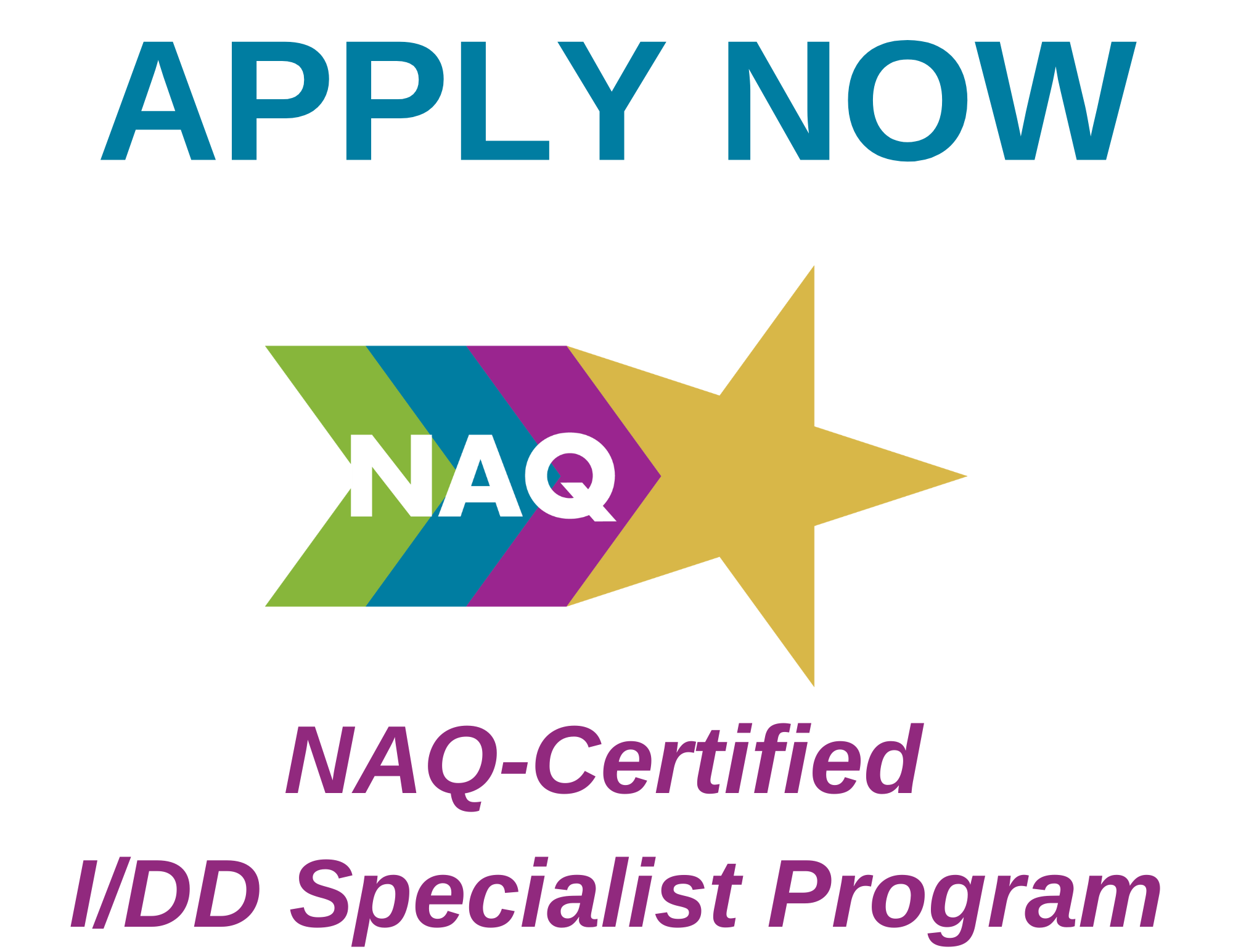Why Don't People With Intellectual Disabilities Use To-Do Lists?

If you are reading this article, you probably began your day—after breakfast and a shower—by putting together a to-do list, or looked at the one you made last night before you went to bed. To-do lists help us feel more organized, map out our priorities, gauge our progress and manage our time more effectively. They help us remember what we need or want to do. And who doesn’t like the warm glow that comes when you cross an item off the list?
Not having a to-do list sets us up to be at the mercy of other people’s lists. It’s certainly a contributing factor to those among us who feel that life is just happening to them, of being overwhelmed and/or treading water. In this instance, I am not concerned about the person, who has retired to a South Seas island and doesn’t even know, or perhaps care, what day of the week it is. But for the rest of us, who want to get things done, be self-directed or improve our lives in some fashion, to-do lists make sense.
Let me ask a question directed toward readers, who work with people having an intellectual disability or are stakeholders in the system of supports for these individuals. How many friends do you have with an intellectual disability, or how many people with an intellectual disability do you support or work with who use to-do lists?
My answer to that question is an embarrassing “none.” I have also asked this question of a significantly large number of people working in I/DD systems, including some in other countries, whose answer is the same as mine—“none.” So the next question is obvious. Why don’t people with intellectual disabilities typically use a to-do list?
I am indeed aware that not all people with intellectual disabilities have the same gifts, abilities or cognitive shortcomings. To anchor this point, current demographics indicate that roughly 85% of all people with an intellectual disability would be considered “mildly impaired” in a testing environment. What this means practically is that they are likely to function at a third to sixth grade level. As a result, I believe that the reason people with intellectual disabilities do not use to-do lists is not because of their disability.
The cynical reader may be thinking, “Well, they don’t want them.” Could that be true? That leadsus to still another question: How many people with intellectual disabilities have been exposed to the merits and utility of to-do lists? One would think that with all of the attention given to informed choice that to-do lists would have come up in these conversations.
Another reader might be thinking, “They don’t need them. They don’t have real jobs, and they only go where their van takes them. The truth is they don’t really have that much to do. A to-do list would be a waste of time. And besides, that’s a job for direct support staff.”
Or perhaps you are the reader who’s thinking, “We should not lay that on them. It will ruin their lives. They are lucky they don’t start their day with to-do lists. I wish I could get rid of mine. I can’t wait until I retire.”
No doubt there are a few other theories or opinions; however, I suggest you consider this likely explanation. Perhaps we have not been as basic, practical, focused or relevant in our person-centered efforts as we need to be. It would be sad, indeed, if we have simply been out of touch with the personhood of the very people we seek to support.
Here’s another question for which I currently do not know the answer: Are the students graduating via special education IEP’s and transition plans exposed to the merits of to-do lists and the benefits of planning? Do they know what a person-centered plan is to do for them?
What if, in fact, to-do lists could serve as a precursor to more genuine person-centered planning efforts? And here is a corollary thought: Properly understood and used, to-do lists would enable a person being supported to be more engaged, to be actively motivated in pursuit of the goals of their person-centered plan. I also have a bias in this regard. It is my belief that most people currently participating in the person-centered planning process are too passive in implementation efforts. This could, of course, be the result of their not wanting or valuing such plans.
A Suggestion for Your Consideration
Before offering a few suggestions for how to-do lists and planning efforts might be strengthened, I would like to share a significant concern—the potential perversion of the idea. The most serious perversion would be to mandate that every person served or supported should have a to-do list. And what could be scarier than the regulation that every person served should have at least three items on their to-do list?
Conceptually speaking, it’s my premise that all person-centered planning activities should maximize the focus person’s involvement in, and responsibility for the plan’s implementation--not just in the development of goals. Unfortunately, person-centered planning itself has become perverted via its evolution into a regulatory requirement with an ever growing number of “check” boxes. You may have noticed the result: the longer the plan, the less interest the person has in it.
Person-centered planning should be about relationships and working from the heart, not from a multitude of assessments, many of which have been over built.[1] It should focus on how the person wants to live their best possible life, not on identifying their meds or directives about not pinching people during their van rides. Plan development needs to begin before the annual meeting with the individual’s support person, facilitator, champion, connected friends, and other people involved. In addition, it is essential that the support person / facilitator have a positive relationship with the focus person and truly know who they are.
Furthermore, it is recommended that the plan facilitator or chairperson do whatever they can to help the person understand the importance of planning, including reasons why person-centered planning is occurring. Individual teaching and learning session(s) could be strengthened in day programs as a class or learning opportunity, perhaps entitled: “Why Planning Is Important.” These small groups could discuss and learn together about planning, making sure to explain that what’s important to some people may not be to others. Once the individuals grasp the overarching value and intent of planning, the class could address the merits and purpose of to-do lists. What is being addressed here is the concern that individuals being served and supported will have missed the significance of “why” we should plan and just be exposed to the “how” or “what” of planning.
Imagine the plight of a person not previously receiving services who knocks on the door of a case management office and asks to participate in a support program. Once determining their eligibility and accepting them into the program, staff tell them that the next step is to develop a person-centered plan. Without any preparation for that undertaking, how could that person help to craft anything resembling a workable plan?
The above experience frequently occurred in the COVID-ravaged past when staff interviewed applicants, accompanied solely by a parent or loved one, via Zoom or the telephone. Sadly, today creating a meaningful and appropriate support team seems to have been thrown overboard.
Teaching To-Do Lists: We Need to Plan for Planning
To-do lists can be seen as a way to carry out and be more engaged in person-centered goals and objectives while living a life that continues to improve. Therefore, dialogue regarding to-do lists should emanate from the uniqueness of the person and their interests, priorities and lifestyle. Of course, it is important to start where the person is. For instance, you may ask them if they have an interest in using a to-do list. If so, the implementation strategy may vary and be crafted on a daily, weekly or, at the outside, a monthly basis. Items spanning a longer time could be noted on a calendar.
As stated above, a support strategy for teaching the use of to-do lists could be used within a day program. For example, a small number of persons served could come together early on a Monday morning and work on their individual weekly to-do lists. Class or group interaction would generate enthusiasm, broaden thinking and increase success.
Each person should have a pad of to-do lists in order to simplify crafting the task lists. Extra pads could be kept in a day program or in a person’s bedroom, for example, to make them easily accessible. In fact, some people may want to begin working on their lists before they turn in for the night.
Individuals able to do so should be encouraged to write down their “to-dos” themselves. This will help encode the item and process. People can also choose different places to keep their lists for their future reference—on cell phones, in pockets, purses, lunch containers, backpacks, desks or cabinets.
Persons with jobs may have a blended list of work and non-work to-do items. It may be easier from a process perspective to write down items as they occur and, when completed, give thought to any necessary prioritization. Some people circle the top priority(s) while others write “ASAP” after the most urgent item. It is likely that each person will have a favorite way to know what’s most important.
Each person will also vary in their use of the tool. Those who are highly motivated will be off and running; those struggling will need more individual attention. Crafting effective to-do lists should be seen as a matter of skill acquisition. Pay attention to the reasons why “wanna be” to-do list users falter. Typically, there are four:
- The skill set needs to be strengthened.
- The person lacks confidence.
- There is a lack of support and encouragement for development as well as the action required.
- There is a lack of recognition or personal reward.
What Are Some of the Current Items Found on To-Do Lists?
- To complete a task or household chore---to do my laundry
- To gain information—what, how, where, why, costs
- To read, look up, check out sports information, etc.
- To run an errand, email, drop off
- To review status of one’s person-centered plan—where am I at?
- To make a Christmas List
- To make contact with a loved one
- To finish a personal project, work on a hobby
- To practice a game, an interest
- To make plans for the weekend
To-do lists should serve as a force of empowerment and source of greater control for a person to have in their life.
This leads to one last question: If the persons being supported have the ability to do the above and aren’t taking this initiative to do so, why not?
Art Dykstra
[1] Documents such as assessments should be in the Personal Record, not the person-centered plan.
|



